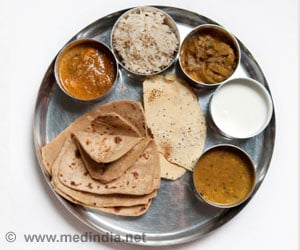Cow dung is likely behind black fungus (mucormycosis disease) that killed thousands of patients treated in India for COVID-19 in 2021 due to black fungus.

‘Cow dung is a part of traditional life in India and is used as an ingredient in many traditional Ayurvedic medicines.’





As of November last year, there were 51,775 cases of mucormycosis disease in the country. Mucorales, a coprophilous (dung-loving) fungal group, thrive on herbivores' feces and India has the largest population of bovine cattle in the world, with a population of over 300 million.The paper published April in mBio hypothesizes that "Mucorales-rich cow excrement, given its use in multiple Indian rituals and practices, especially during the pandemic, probably played a key role in India's COVID-19-associated mucormycosis epidemic."
Jessy Skaria, an author of the paper and an independent researcher from Houston, Texas, tells SciDev.Net that the unusually high incidence of COVID-19-associated mucormycosis disease in India was attributed by most physicians and researchers to SARS-Cov-2 virus infection with diabetes and treatment using steroids.
"However, since the same factors existed in other countries as well, we looked at unique local causes in India that could increase exposure to Mucorales spores, such as through fumes from burning cow dung," says Skaria.
"Increased fungal spore burden in the Indian environment has been demonstrated in a recent multi-center study which showed the burden of Mucorales in areas close to hospitals to be as high as 51.8%."
Advertisement
"This could potentially explain India's disproportionate case burden of mucormycosis at all times, even before the pandemic," says Skaria. She had cited studies suggesting that Mucorales could be detected in 14% of patients in intensive care units in India and that on an average of 65,500 deaths a year were attributable to mucormycosis along with the COVID-19 infection cases.
"Our hypothesis is also based on pioneering work that proved that fungal spores could travel long distances in smoke from biomass fires," she adds.
Advertisement
"Notable exceptions are Kerala and West Bengal where the incidence of mucormycosis was far lower than in Maharashtra and Gujarat where the slaughter of cattle is strictly banned and where the use of cow excreta for fuels and rituals is popular," says Skaria. "It's hugely pertinent that in Kerala where there is no ban on slaughtering cows and no taboo on eating beef… and where cow dung is almost never used as fuel…the incidence of mucormycosis was found to be low."
During the COVID-19 pandemic, political and religious rhetoric prompted many Indians to use cow dung and urine liberally to prevent or treat COVID-19, including mass smoking with smoked cow dung cakes.
Similarly, the newspaper said that the abnormal increase in cases of mycorrhizal disease during the pandemic in Iran may be due to the burning of donkey dung to create the traditional medicine "anbarnesa smoke."
"To establish the role of herbivore dung in the causation of COVID-19-associated mucormycosis, case control studies, genetic (phylogenetic) studies and other aerosol viability analysis of Mucorales spores, post-burning, is critical," Rodney Rohde, chair and professor of clinical laboratory science at Texas State University, tells SciDev.Net.
"However, the hypothesis has strong support based on the epidemiological and case data that is occurring in India. The burning of cow dung is a possible vehicle for spore distribution and one that needs examining to help further the understanding of the ongoing and dangerously high prevalence of mucormycosis in India."
Judy Stone, a US-based infectious disease and clinical research specialist, tells SciDev.Net, "Exposure to Mucorales spores in cow dung is a very plausible hypothesis — I think it is pretty clear that there is more to the mucormycosis epidemic than diabetes and steroids. Other countries (e.g. China) have a much higher prevalence of diabetes, yet have not had the overwhelming numbers of patients with mucormycosis.
"I hope that this hypothesis, now embraced by academic physicians and published in a peer-reviewed journal, will finally prompt further study by aerobiologists and other scientists in India."
Source-Medindia





